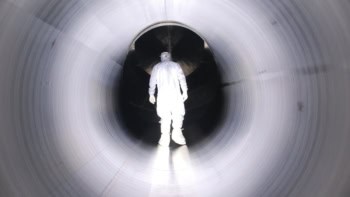Refurbishing the UK's Trident nuclear-weapons system would be better than replacing it

Life is far from simple in the post-Cold War world. The neat US-Soviet divide is long gone, having been replaced by a more complex geopolitical reality in which countries like North Korea and Iran have fledgling nuclear programmes. So what should a country like the UK do about its nuclear weapons? The answer for the British government is simple. Its view is that as no-one knows what the world will be like politically in 30 years’ time, the UK needs to keep an independent nuclear deterrent as an “insurance policy” against the uncertainties and risks of the future. That argument makes sense, but it is not clear why this means we need to replace the UK’s Trident nuclear-weapons system, as the government recommended in a White Paper last year.
Brought on-stream in phases since 1994, the Trident system consists of four nuclear-powered Vanguard submarines at least one of which is on patrol at any given time. Each vessel can carry up to 16 Trident ballistic missiles and each missile can carry up to three nuclear warheads. The government wants to build a new fleet of four submarines to replace the Vanguard vessels, which the Ministry of Defence says will reach the end of their lives by the early 2020s. According to the government, we need to decide now whether to replace Trident because it will take at least 15 years to design and build a successor. It estimates that building four new submarines, replacing or refurbishing the warheads and paying for the related infrastructure will cost a total of £15–20bn.
The House of Commons will be given the chance to vote on the matter, probably some time later this month. The problem is that no-one is really sure of the true costs, much of which are shrouded in secrecy by the military. MPs are therefore being asked to vote for a replacement system that has not been fully costed. It is not even clear if the UK has enough skilled scientists and engineers at places like the Atomic Weapons Establishment to fulfil the project, which could lead to delays and cost overruns (see “The costs of replacing Trident”).
A much more sensible way forward would be to refurbish the Vanguard submarines rather than replace them altogether. The US physicist Richard Garwin – a long-time adviser to the American government on nuclear weapons – has argued that it would be technically simple to extend the submarines’ life so that they last for 45 years rather than the estimated 25 or 30 years. Indeed, the US has extended the service lives of its Trident-carrying submarines and it seems odd that the UK cannot do the same. After all, the Vanguard submarines are already subject to a continuous maintenance programme. Appearing before the House of Commons defence select committee earlier this year, Garwin estimated that refurbishment would save the UK up to £200m a year – and give Britain time to consider what sort of nuclear arms it needs, if any at all. He is rightly sceptical of the military’s view that the vessels will wear out within 25 years, pointing out that America’s B52 planes, for example, are still in service even though the US government originally claimed that they would not last much beyond 1970 because of problems like metal fatigue.
Given the political make-up of the House of Commons, it seems likely that a majority of MPs will vote to build a replacement. A better solution, however, would be for MPs to vote against the proposals, which would give us more time to consider the refurbishment option.



